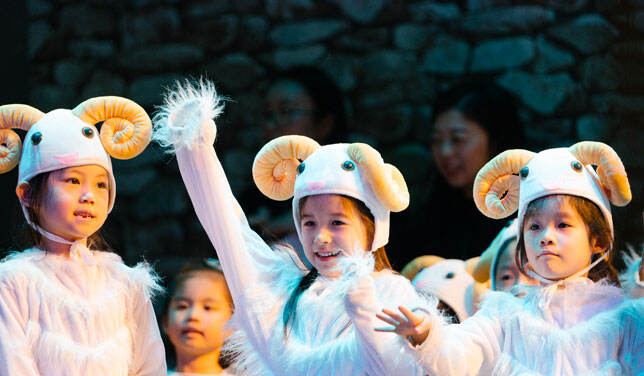20 Virtual Museum Tours to Explore This Summer
Museums educate people. They preserve humanity’s social, cultural and scientific history in a way that empowers people to learn about people; how people of the past behaved and reacted to the world around them, and how these behaviours and reactions have impacted our own past, present and future. As technology and the Internet continue to evolve, museums are beginning to adapt their programmes and exhibitions to accommodate a new group of ‘digital visitors’. Many museums now offer virtual tours and exhibitions for their most popular displays, and with life around the world still ‘put on hold’ during the global Covid-19 pandemic these online opportunities have become great resources for the public to continue their education. Using everyday technology, people can now access some of the biggest and best museums in the world. Summer is fast approaching. During these somewhat ‘unusual’ and housebound summer months, why not take a digital trip to ‘visit’ and ‘tour’ around some of the greatest museums in the world?
01
The British Museum
Museum of the World Established in 1753, the British Museum is one of the world’s oldest and largest museums. It was the first public national museum in the world, and now holds a comprehensive collection of some eight million works including relics, treasures and manuscripts from throughout human history. The British Museum houses the world’s largest and most comprehensive collection of antiquities from the Classical world (i.e. Ancient Greece and Rome). Its collection of Egyptian antiquities comprises of more than 100,000 objects, including a large collection of sculptures dating back to 10,000BC. The vast and diverse range of objects housed by the British Museum makes it one of the most unique museums in the world.
An interactive experience across time and space
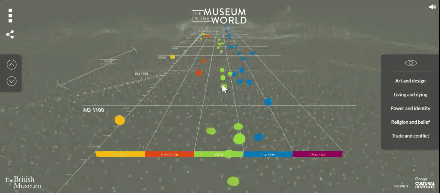
Museum of the World
The Museum of the World, a project co-led by the British Museum and Google Cultural Institute, offers users an interactive experience through time, space and cultures. It features some of the most fascinating objects in human history, ranging from prehistoric times through to present-day. The Museum of the World allows its users to explore objects from throughout human history and discover hidden links between them.
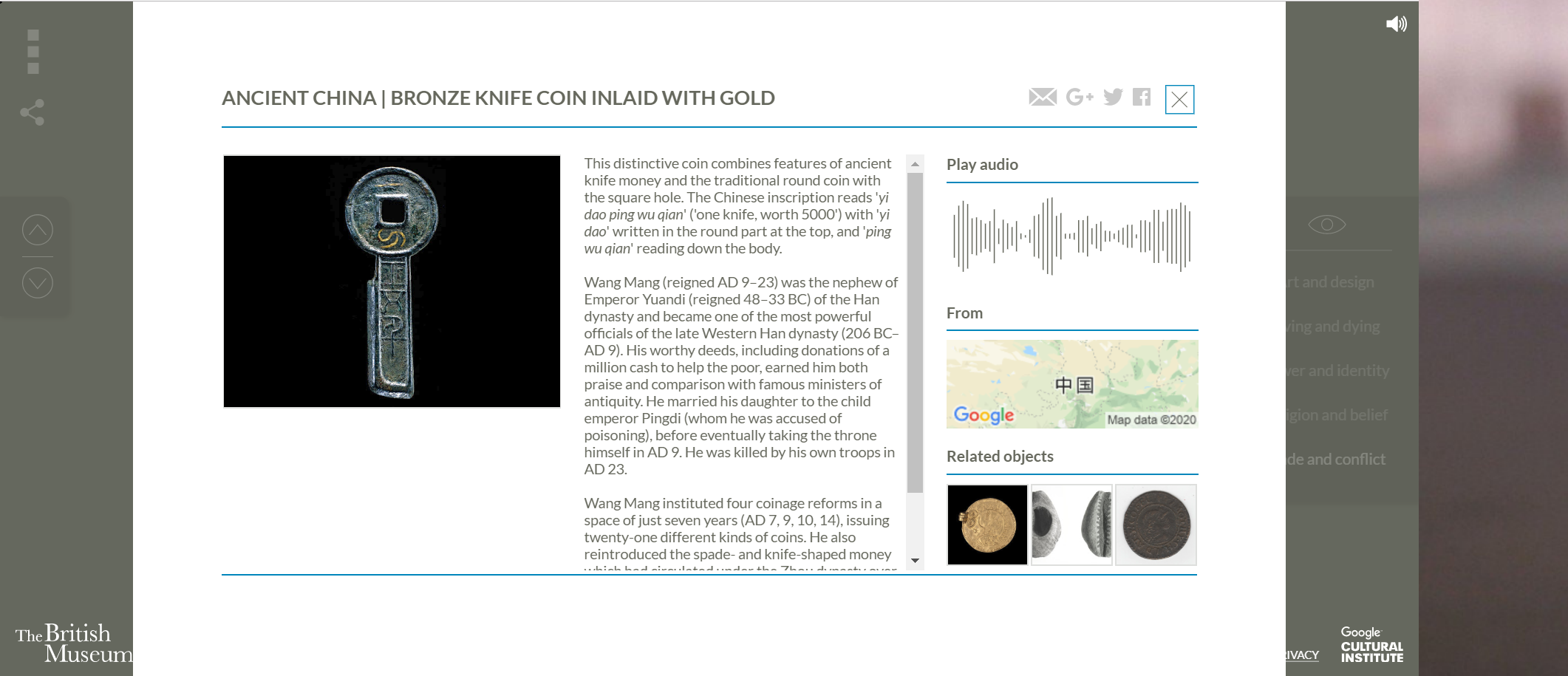
Descriptions and audio guide for objects in Museum of the World
Virtual tours of 60 exhibition rooms
In addition to the fascinating Museum of the World, digital visitors of the British Museum can take a virtual tour through 60 of the museum’s galleries through its official site.
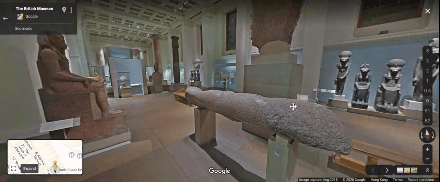
Virtual tour around British Museum


The Museum of the World Online tour
02
Louvre Museum
An Historic Monument Located on the Right Bank of Seine in the centre of Paris, France, Louvre Museum is the largest art museum in the world. Established in 1793, the museum is housed in the Louvre Palace – originally built as the Louvre castle in the late 12th to 13th century – whose walls have witnessed the lives of more than 50 kings and queens of France. The Louvre is considered to be one of the most treasured buildings that remains from the French Renaissance period and is now known for its vast collection of Classical paintings and sculptures.
Taking a ‘Closer Look’

Front page of A Closer Look
Louvre Museum’s official website hosts A Closer Look, a section where users can see the details of an artwork up close by using a virtual magnifying glass.
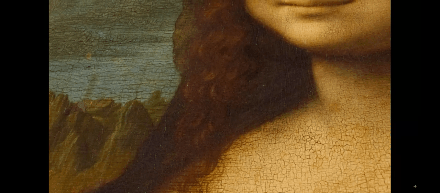
High-definition crackles in the Mona Lisa portrait under the Closer Look page's virtual magnifying glass
Upon clicking into an artwork, users can zoom in or out on the image as if they were truly standing within a close distance of the artwork. The soft and gentle classical music in the background works well to set the tone and help users relive the time when the artwork was first created.
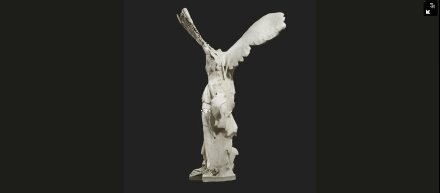
Details of the Winged Victory of Samothrace sculpture
A Closer Look also allows its users to circumnavigate a collection of the museum’s sculptures. As with the museum’s painted artworks, users can rotate and zoom in/out of the image to appreciate details of the sculptures from a range of different angles.
Embarking on a virtual tour
After appreciating the museum’s art collections up close, digital visitors of Louvre Museum can take a virtual tour around the exhibition halls and galleries through its official site.
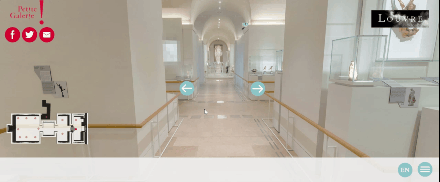
Virtual tour around Louvre Museum
The virtual tour’s panoramic feature allows users to walk through iconic sections of the museum.
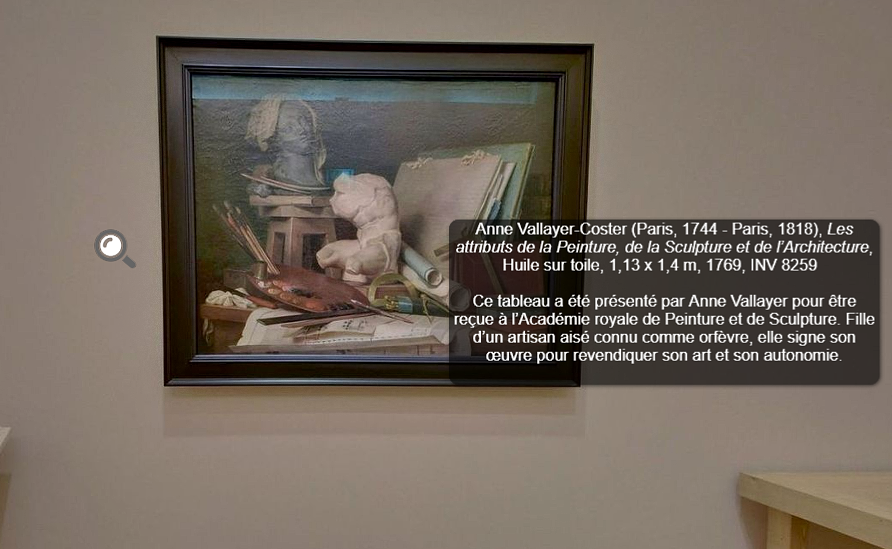
Click the object to see more details
Visitors who wish to know more about an object can ‘stop by’ to read its in-depth description.


A Closer Look Online tour
03
Meet Vermeer
The Artist's Complete Works
'United' Online
Johannes Vermeer was a Dutch Baroque Period painter who, although only moderately successful during his own time, is now renowned for his precise and meticulously detailed portraits. His most famous painting, Girl With a Pearl Earring, is housed in the Mauritshuis Museum in The Hague. In 2018, Google Arts & Culture – an online platform that houses the collections of over 2000 museums, art galleries and other cultural institutions – teamed up with the Mauritshuis Museum to create a virtual exhibition of Vermeer’s work in augmented reality. Very shortly after this collaboration was made public, 17 other museums that housed Vermeer’s paintings joined the effort to make his work more accessible and offered to scan each of their collections using Google’s exclusive Art Camera technology. Subsequently, Vermeer’s complete works were ‘united’ for the first time in the world’s first online Vermeer gallery.
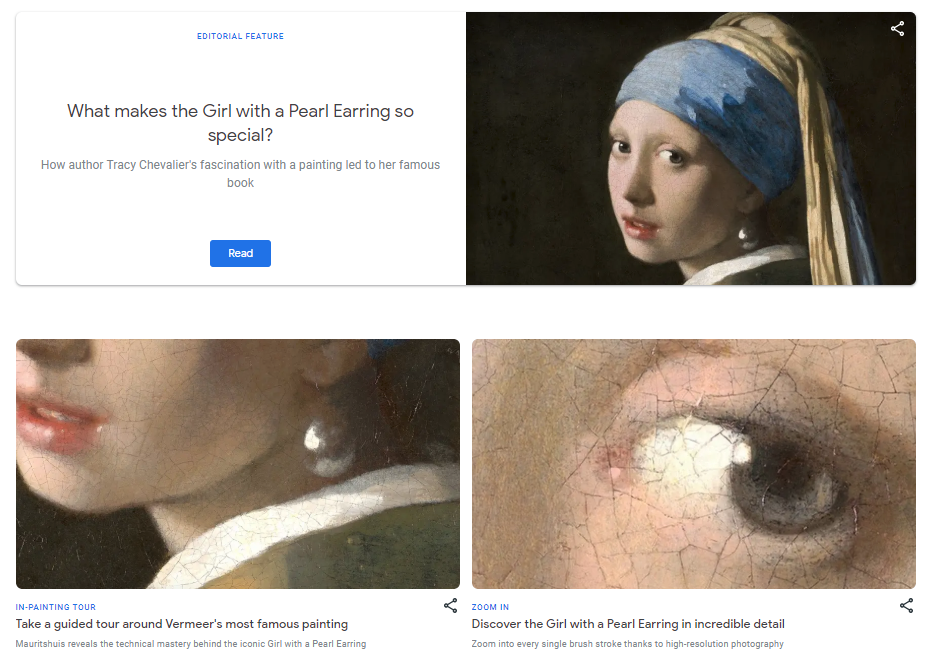
Girl with a Pearl Earring
In the past, admirers of Vermeer’s work would have to visit each of these museums in person to view his paintings, but with the blessing of advanced technology and virtual tourism, they can now view all of his paintings in one place – Meet Vermeer.
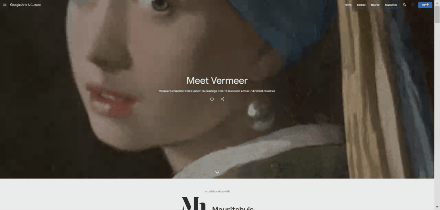
Front page of Meet Vermeer
An augmented reality exhibition
To create a more vivid and immersive experience for their audience, Google Arts & Culture has adopted advanced augmented reality technologies that allow users to view Vermeer’s paintings as if they were standing in an exhibition room. The perspectives and dimensions of the room change as viewers navigate themselves through it.
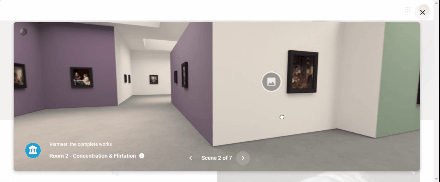
Tour around the Meet Vermeer exhibition
in augmented reality
Meet Vermeer is accessible via the Google Arts & Culture app or official website. Visitors can learn even more about each piece of art by reading individual descriptions that include otherwise easily overlooked details.
Unique themes and exhibition trails
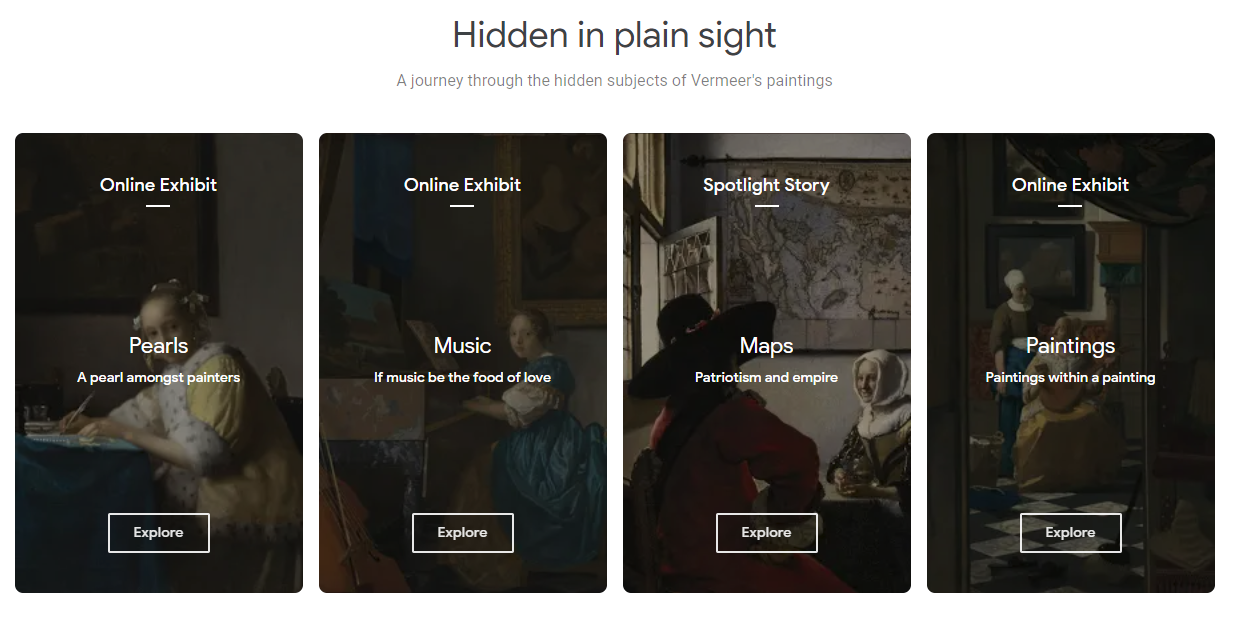
Hidden subjects in Vermeer's paintings
The Vermeer exhibition features a section where it takes singular elements such as pearls, music, maps and paintings as subjects and guides the audience through the ideas and artistic arrangements that underlie Johannes Vermeer’s artwork.

Online tour
A large number of museums in China have also begun the process of digitising their exhibitions. World-famous museums and tourist sites such as The Palace Museum, National Museum of China and the Mogao Caves now offer online tours for the public. The advent of new and advanced digital technology allows those who wish to admire China's rich and unique history to do so via a few simple clicks online.
04
The Palace Museum
China's Largest Arts and Culture Museum The Palace Museum is a national museum housed in the Forbidden City at the centre of Beijing, China. Established in 1925, the museum is home to over 1.8 million pieces of art, mostly from the imperial collection of the Ming and Qing dynasties. As one of China’s largest arts and culture museums, the Palace Museum houses the largest collection of preserved ancient wooden structures in the world.
Panoramic views
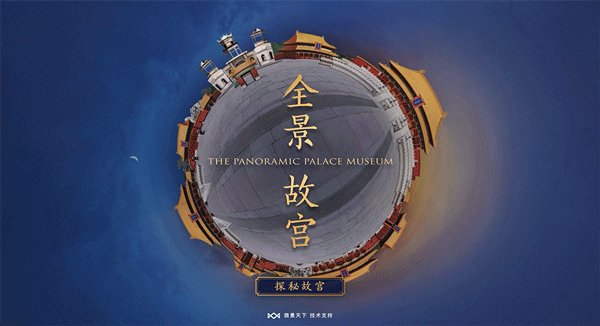
Panoramic view of The Palace Museum in virtual reality
The Palace Museum’s website offers a panoramic feature that allows viewers to have a comprehensive look around the museum as they can virtually move through most hallways, mansions and buildings. The panoramic perspective this feature offers grants the museum’s digital visitors an in-depth experience of the grounds that makes it easy to imagine visiting the palace in real life.

Panoramic view of The Palace Museum in virtual reality
After clicking on a building, users are able to see the elaborate interiors and read detailed information about each exhibit and point of interest inside.

An eyeful of spring pear blossoms in Chengqian Palace
Summer at the Palace Museum sees its gardens bursting with a variety of flowers. Visitors can view begonia in the Wenhan Palace, magnolia in the Zhongcui Palace and pear blossoms in the Chengqian Palace. Come wintertime, visitors will see a snowy imperial palace.
Thousands of treasures in the digital archive
The Palace Museum launched a new Digital Cultural Object Library last year, so visitors can now view up to 50,000 objects and artefacts that are housed in the Palace Museum.
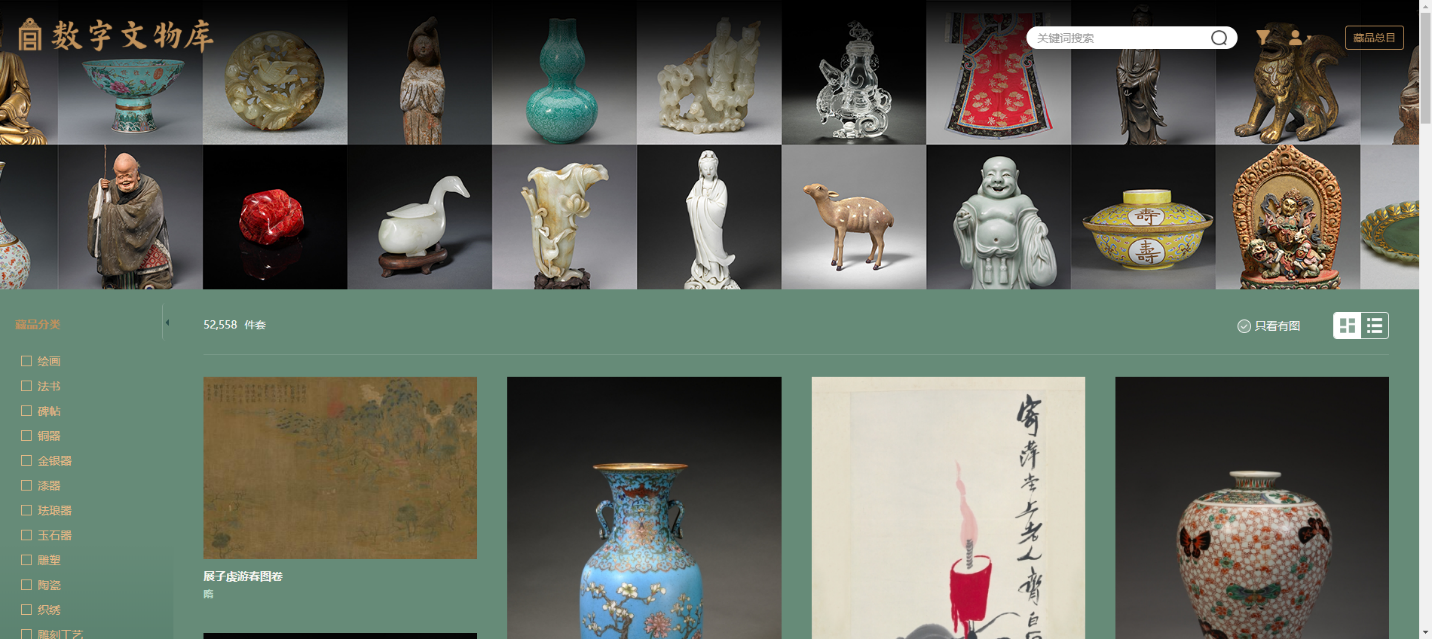
Main page of The Palace Museum's Digital Cultural Object Library
After clicking into the main page of the Library, visitors will see a panel detailing the different categories of cultural objects housed by the museum. The first page displays some of the most precious relics from throughout China’s history, including pottery from the Han Dynasty, bronze statues from the Tang Dynasty and decorative lamp panels from the Song Dynasty.
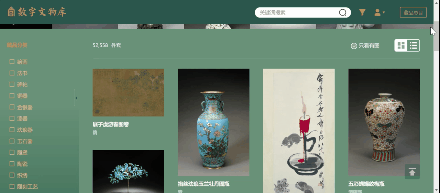
The Palace Museum's Digital Cultural Object Library
Visitors can zoom in to see the smallest details of an exhibit.

Yellow enamelware with plum blossom details


Online tour of The Panoramic Palace Museum (Chinese only) Online tour of The Palace Museum’s Digital Cultural Object Library (Chinese only)
05
The Mogao Caves
Cultural Crossroads on the Silk Road The Mogao Caves, also known as the Thousand Buddha Grottoes or Caves of the Thousand Buddhas, form a system of nearly 500 chambers that make up one of the largest and most significant Buddhist art sites in the world. Located in Dunhuang, China, the caves are famous for their statues and wall paintings that span some 1,000 years of Buddhist art. Carved into the cliffs above the Dachuan River, the Mogao Caves comprise the largest, most richly endowed, and longest used treasure house of Buddhist art in the world. It was first constructed in 366AD and represents the great achievement of Buddhist art from the 4th to the 14th century. Over the years the caves have remained a great symbol of creativity and artistic achievement in China. Its influence on the development of art, architecture, technology, city planning and landscape design is still apparent today.

Digital Dunhuang's Mogao Caves collection
Visitors will be blown away by the artwork, painted sculptures and ancient architecture on the walls of the Mogao Caves. Digital Dunhuang, a website that has digitised a lot of the artwork housed in the Mogao Caves, allows its visitors to view up to 4430m2 of wall art from 30 caves dating back through ten Chinese dynasties. Digital Dunhuang offers panoramic virtual tours through exhibition rooms. Visitors can also view these exhibitions using a Virtual Reality (VR) mode.

Digital Dunhuang's Mogao Caves collection
The website features a filter function that allows visitors to view the cave walls according to their name, category and date of creation. One of the biggest perks that comes with viewing an exhibition online is that no one can disturb you from fully appreciating and exploring this piece of world history. Visitors can zoom in to each of the walls to view the details of the artwork even closer.

Online tour
06
National Museum of China
A Museum with the Largest Single Building Area in the World The National Museum of China has a total construction area of nearly 200,000m2 and a collection of more than one million objects. It has the largest single building area of any museum in the world and houses some of the most diverse collections in all of China.
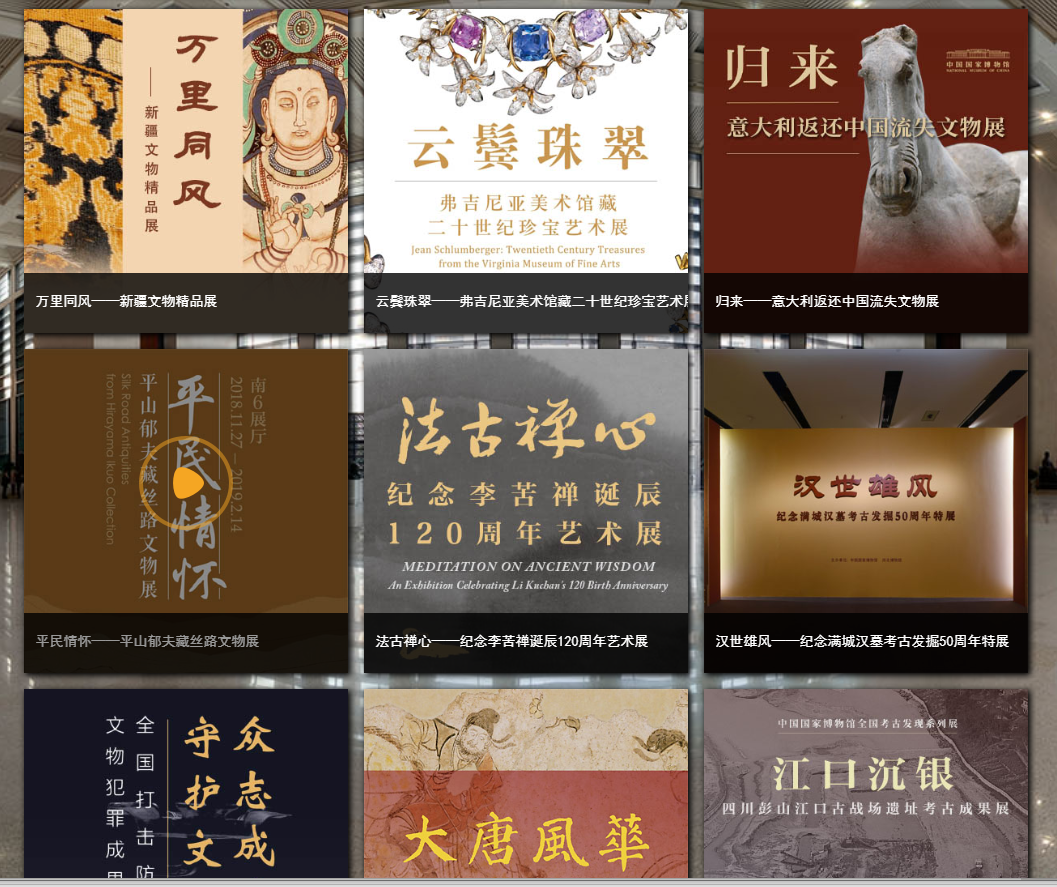
Various virtual exhibitions available on National Museum of China's website
The National Museum of China offers virtual tours for 35 of its past exhibitions. For convenience, website visitors can turn on the auto-play function, sit back and watch the exhibitions reveal themselves as they learn more about China’s cultural and artistic history.
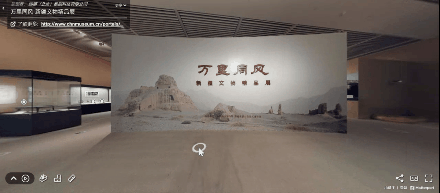
A virtual exhibition of Xinjiang relics on the National Museum of China's website
The virtual tour allows visitors to see the exhibition via a first-person perspective. Visitors can even connect their VR glasses to have a more immersive and realistic experience of viewing the exhibition.

Online tour
The famous Chinese educator Mr. Cai Yuanpei once said, “Aesthetic education makes life beautiful. It allows us to focus on the beautiful things in life while forgetting our worries. Aesthetic education can be achieved through music, drawing, games in school; it can be achieved through museums, galleries, theatres and parks.” Today, museums are considered by many as valid and effective learning environments. These institutions preserve our social and cultural histories, while also safeguarding the artistic and creative endeavours that reflect our own humanity so well. Museums have a lot to offer in terms of educating their visitors on a diverse range of themes and ideas. In 1977, the International Council of Museums designated 18 May as International Museum Day. This day aims to raise public awareness of the important role that museums play in society, as is reflected by the themes of previous years’ International Museum Days:
2018-2020 International Museum Day Themes
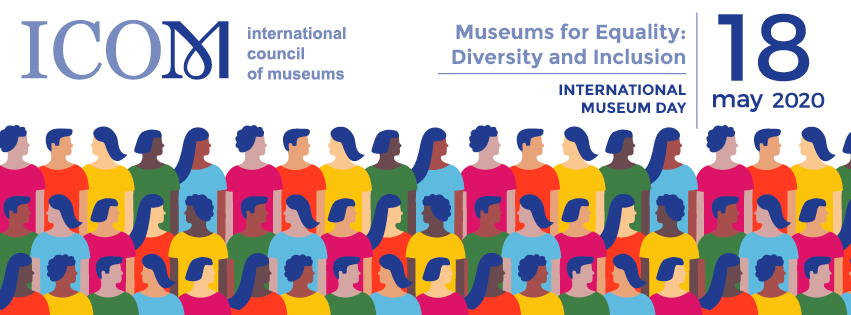
2020 Museums for Equality: Diversity and Inclusion

2019 Museums as Cultural Hubs: The Future of Tradition

2018 Hyperconnected museums: New approaches, new publics
Museums house some of the most unique artefacts and artworks from throughout human history. They inspire people to learn and think deeply about the world around them. They encourage younger generations to connect historic and present-day ideas with the subjects they are learning at school. In museums, children can easily explore the wonder and history of this very vast world. This concludes our virtual exploration of six of the world's most popular museums. Below, we have included links to 14 other world-famous museums that also offer virtual tours. We hope that all children, parents and teachers have a wonderful summer!
Further recommendations for international museums that accommodate digital visitors: Berlin National Museum: www.smb-digital.de Boston Museum of Art: www.mfa.org/collections/search Dutch National Museum: www.rijksmuseum.nl/en/search Vatican Museum: www.museivaticani.va Uffizi Gallery: www.uffizi.it/en/pages/digital-archives Picasso Museum: courtyard.museupicassobcn.org/ Roald Dahl Museum and Story Centre: www.roalddahl.com/museum/visit/virtual-museum-tour
Further recommendations for domestic museums that accommodate digital visitors: Shanghai Museum: www.shanghaimuseum.net/museum/frontend/ Sanxingdui Museum (Chinese only): baike.baidu.com/museum/sanxingdui# Potala Palace: www.potalapalace.cn/home.html Digital Museum of Shanghai Chinese Painting Academy (Chinese only): t.cn/AiHfTUZM Zhejiang Museum: www.zhejiangmuseum.com/zjbwg/exhibition/digital_zpm.html National Art Museum of China: www.namoc.org/zsjs/zxzl/ Suzhou Museum (Chinese only): www.szmuseum.com/0pano/DigitalMus/HDView.html
Related Articles











